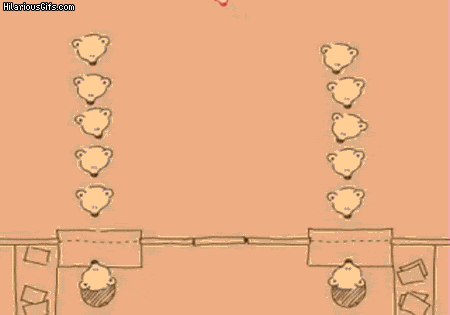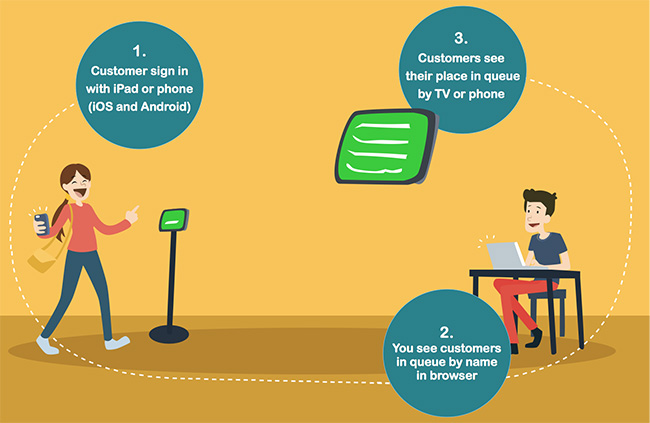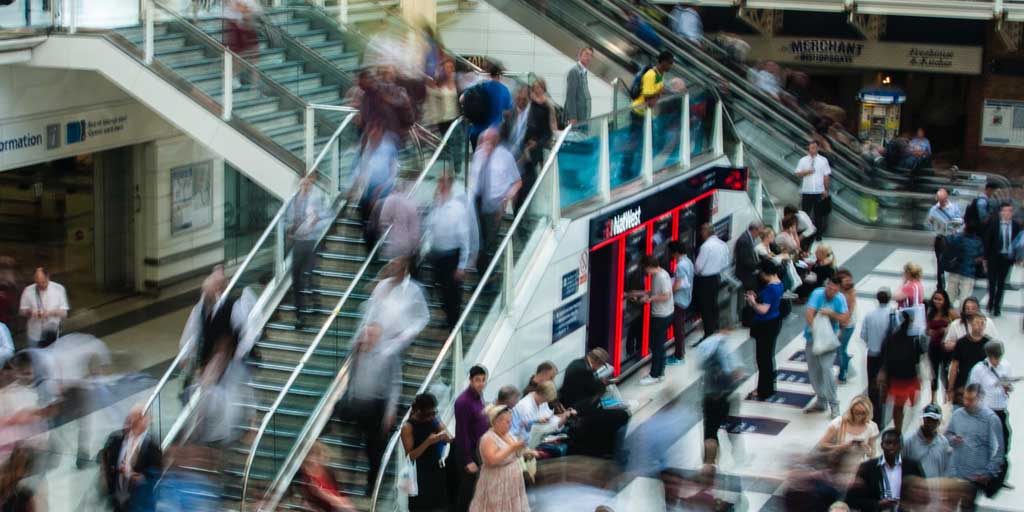Everyone hates waiting in line. Especially when the retail locations
don't use a queue management system.
We've all been there. You're at the grocery store, and it's busy. You've
come in to grab a few things and you scowl trying to find the shortest
line to check out. You're not sure which line to pick, so you choose one
and get ready to wait.
A minute goes by and you notice the line next to you is advancing
faster. You do a quick queue switch. As soon as you do, your old line
starts to speed up again and fills up with a few more people. You can do
nothing but shake your head. And the same thing happens with traffic.
The classic film "Office Space" opens with a sequence so recognizable that we can't
help but laugh as the protagonist, late for work, tries to switch lanes
only to be continuously stuck in the slower lane. These situations beg
the question, why does it always seem like the other lane is moving
faster?
The key word here is seem. The impression that the other queue moves
faster, whether in a busy store or stuck on the highway, comes from a
mental phenomenon known as illusory correlation.
Illusory correlation is a key part of our cognitive functioning referred
to as
heuristics.
Heuristics enables us to make connections and assumptions in order to
think quickly and react to the world.
How illusory correlation works
Our minds are highly complex
systems of memory, emotion and
recognition. We are naturally more impacted by stronger
sensations and
experiences than weaker sensations, whether they be positive (joy,
elation) or negative (despair, anger). Our memory reacts the same way,
being more impressed by stronger experiences than weaker experiences.
The stronger something is to us, the more it is
salient. In
short, we recognize and remember more salient things than less salient things.
Salient things are new, rare, shocking, or powerful. They stand out from
the norm, so we pay more attention to them. Such cases include hearing
about a crime committed by someone of a minority group. The crime is
salient because it doesn't happen every day (hopefully!). The criminal
in the minority is salient because he or she is less common than a
regular person in the majority. This is exactly why we have
stereotypes. We are more
affected by salient information than normal information causing us to
make generalizations and assumptions that we believe, regardless of
whether there is real evidence to support it.
When other very salient things like situations and emotions affect us at
the same time, we create the same sort of automatic assumption that the
two go together. Take driving as an example. When you are coasting along
normally, driving is a rather neutral experience. But when you are
inching along the motorway in stop-and-go traffic, you become
frustrated. Being idle counts as unoccupied time. We feel unoccupied time more than occupied time.
This gives us a misconception of how long we wait, and it's one of the
reasons why we hate waiting in
lines. The
stronger negative emotion makes the experience more salient.
Now let's drill down a little deeper into the experience of waiting in
line. When we see everyone waiting together, the whole experience is
negative in an equal way. If it's our line that starts moving, we rarely
look around and say "haha! look at me!" We just proceed ahead and the
experience becomes more neutral (less salient) to us. That means that
our memory is less likely to cache that experience.
If we look around and notice that another line is moving, we feel worse
because we want to be in that line. Instead of becoming more neutral,
the experience becomes more negative (stronger) making it more likely to
stay in our memories. If you've ever tried to switch lines and get stuck
again, it becomes even more salient of an experience. It's this saliency
that creates the correlation in our minds.
Certainly, there are many factors that can contribute to actually slower
lines, like a lazy cashier or someone paying by check. And personality
traits like the aggressiveness of a driver can determine how efficiently
someone usually moves through traffic. In places like stores, banks, or
government offices, queue management systems can be implemented to
improve a customer's experience, sometimes with unexpected ideas.
Elevators have
mirrors as a
way to improve customer satisfaction by reducing perceived waiting
times. If you're occupied checking your hair or shirt, you won't feel
like you're waiting as long. Providing customer service up the queue is
another way to reduce perceived and real wait times, like when ordering
at
Starbuck's.
The process of making a coffee starts up the line before the customer
arrives at the register to pay, instead of waiting to get to the
register and then waiting longer for the order. It's a more efficient
queue management that results in happier customers.
The universe is not out to get you
The most salient thing in the world is ourselves.
We perceive everything from our points of view and our points of view
only. That means that each of us feels like a situation or experience is
happening to us, not simply with us, also known as the fundamental
attribution
error.
Illusory correlation is just our brains relying on fewer, stronger
experiences to create wide generalizations, even though those
correlations are not necessarily true.
So the next time you're waiting in line, it might make you feel a little
better knowing that everyone else is thinking the same thing. And if
you're the lucky one in the fast line, or in a place with a solid queue
system, take a second to notice and enjoy it. You just might start
making a positive correlation instead.





